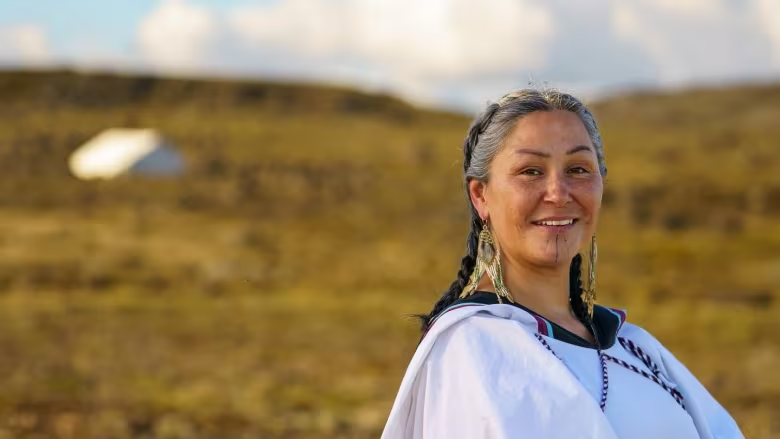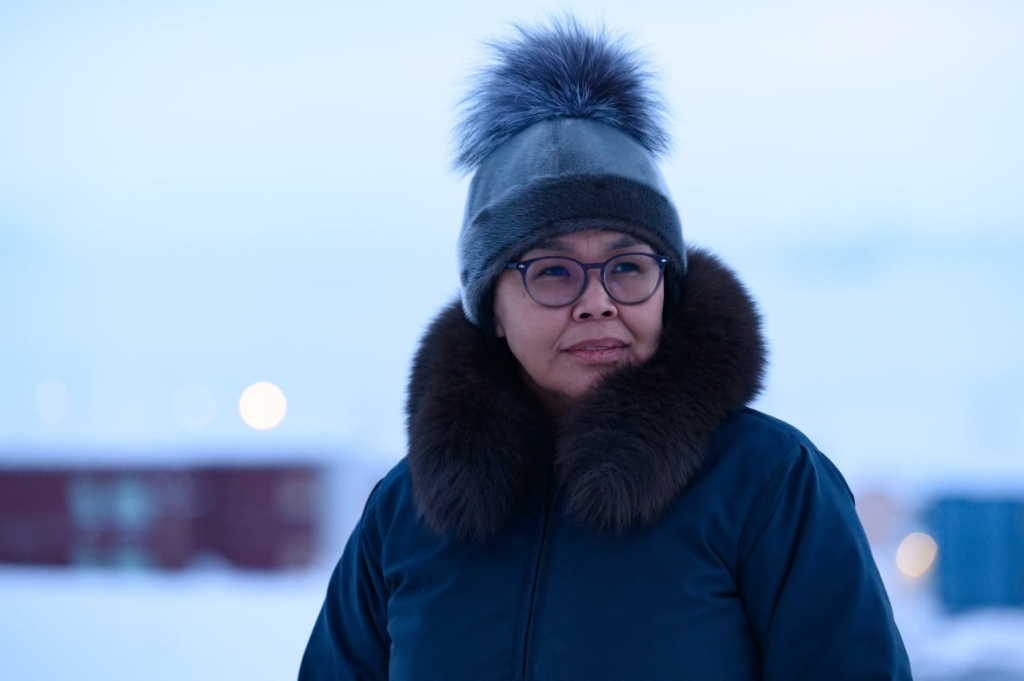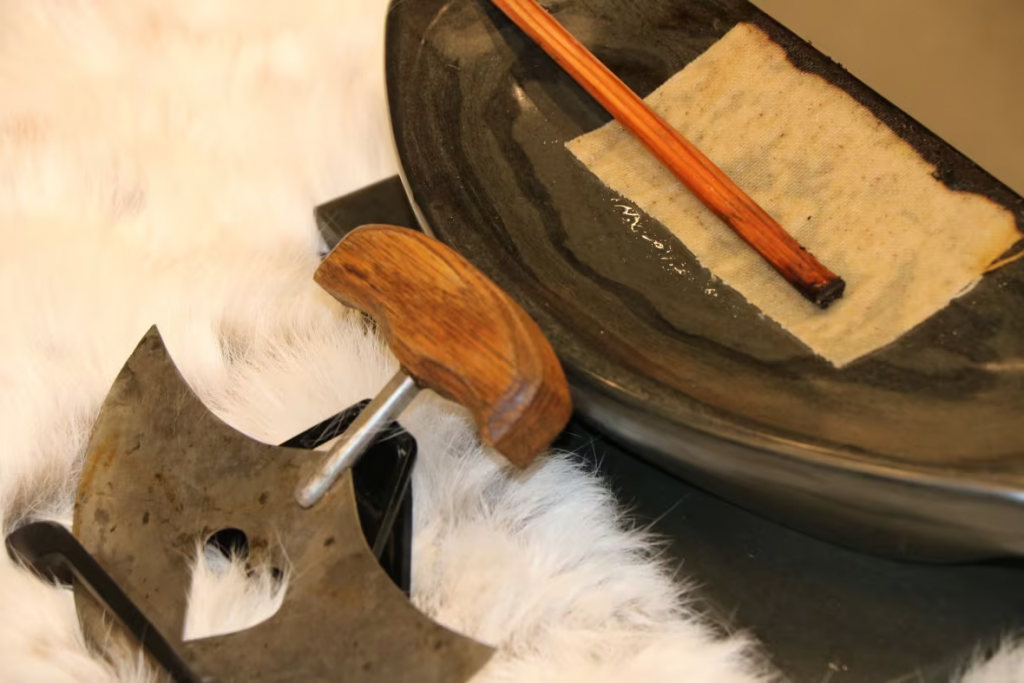Imitation Inuit artifacts are everywhere, but a new treaty is trying to change that

By Samuel Wat
World Intellectual Property Organization passed treaty to protect some traditional knowledge
Imitations of Inuit art and artifacts — mass-produced for profit — are all over the internet.
A quick search for an ulu on Amazon, for example, brings up dozens of knives which claim to be the real thing.
One such knife that Bernice Kootoo Clarke, owner of Kuutuu Cultural Consulting, points out is from a company called Dalstrong.
The Toronto-based company markets them as “traditional Alaskan fish knives” manufactured in China, as stated on its website.

Dalstrong has not responded to CBC’s request for comment.
“The ulu is the woman’s knife and it is very special to receive your first ulu,” Clarke said.
“Me gifting my daughter her first ulu … comes from my spirit, my heart, and my people as an Inuk woman.”
Imitations of all types of Inuit artifacts, including inuksuit (inushuks), are a problem Nunavut NDP MP Lori Idlout has seen grow over the years.
“We see the disparity that those kinds of products generate between those non-Inuit who mass produce them, and Inuit who could have benefited from the economic opportunities if they had made them themselves,” Idlout said.
“It’s their ingenuity that is being stolen and those that are stealing from Inuit … they don’t care.”

The World Intellectual Property Organization (WIPO), an agency of the United Nations, wants to change that as they negotiate ways to protect traditional knowledge.
What the UN treaty covers
In May, WIPO adopted a 10-page treaty to protect traditional knowledge associated with genetic resources that still needs to be ratified.
For example, companies making cosmetics with Indigenous plants must, under the agreement, disclose the country, or community, that knowledge came from.
It would also allow countries to establish databases of genetic resources and associated traditional knowledge.
But getting to that point took 25 years.
A spokesperson for Innovation, Science and Economic Development Canada, said the federal government is still reviewing the treaty, and is consulting with Indigenous groups and stakeholders, before deciding whether to sign it by the May 2025 deadline.
Even if Canada does sign the treaty, George Nicholas isn’t convinced it’ll create effective change. The professor of archeology at Simon Fraser University led an eight-year international project on cultural appropriation.
“Now they’re reading the fine print and they’re saying, ‘We didn’t realize that to make it work, we have to give power, decision making, authority, to the Indigenous peoples in our country,'” he said.
Disconnect between western and Indigenous law
The next round of negotiations in November would cover traditional knowledge in general, and that could cover Inuit artifacts like the ulu.
But that conversation might not be so straightforward, Wend Wendland, the director of WIPO’s traditional knowledge division said.
“Knowledge and culture are always evolving. They are being shared between communities,” he said.
“They will also need to define who the beneficiaries of the new rights would be. Would it be Indigenous people? If so, what does that mean? Could individual artists claim rights to a traditional cultural expression?”
The problem with laws like copyrights, patents, and trademarks, Nicholas said, is that they protect intellectual property of an individual or corporation — not Indigenous traditions.
“What needs to be protected is not just economic interest, but also cultural and spiritual interests and the creativity behind Indigenous heritage,” Nicholas said.
“The creativity behind Indigenous heritage is not the result of a single individual, but of families and clans going back many generations, so there is no one copyright holder.”

Idlout agrees mechanisms in western law aren’t sufficient, though she’s seen the conversation around Indigenous law grow and she wants more emphasis on that.
“It can’t just be one piece of the puzzle, it has to be the whole system and it has to respect all of what Indigenous peoples have been able to maintain with these laws for generations,” she said.
She wants to see punishments for those who copy Indigenous traditions, and for the profits from sales to be returned to the affected Indigenous groups.
What ‘Indigenous-inspired’ looks like
There is a fine line between cultural borrowing and cultural appropriation, George Nicholas said. One involves proper consultation about what is appropriate.
“The difference between the two … is sometimes difficult to discern, and really, the only ones you can make that judgment are those whose heritage it is,” he said.
Bernice Kootoo Clarke doesn’t necessarily think non-Inuit should stay away from producing Inuit products — but it has to be done as a partnership.
“An Inuk should tell the story of the ulu and how they are working with a company to collaborate, which is so important because you’re uplifting one another and working together to come to a common cause,” she said.
Idlout points to the partnership between Canada Goose and Victoria’s Arctic Fashion as an example to aspire to.
“Not only do they work together, but they’re using the creativity of Victoria, the owner, and they’ve also made sure to share their materials as a donation to Inuit communities,” she said.
“It can benefit both parties economically.”
Related stories from around the North:
Canada: Inuit Art Foundation takes over art certification from Canadian government, Eye on the Arctic
Finland: Sami NGO demands removal of “Far Northern Attire” from Square Enix’s Final Fantasy, Eye on the Arctic
Norway: Certification marks help both Sami artisans and consumers, says council, Eye on the Arctic



